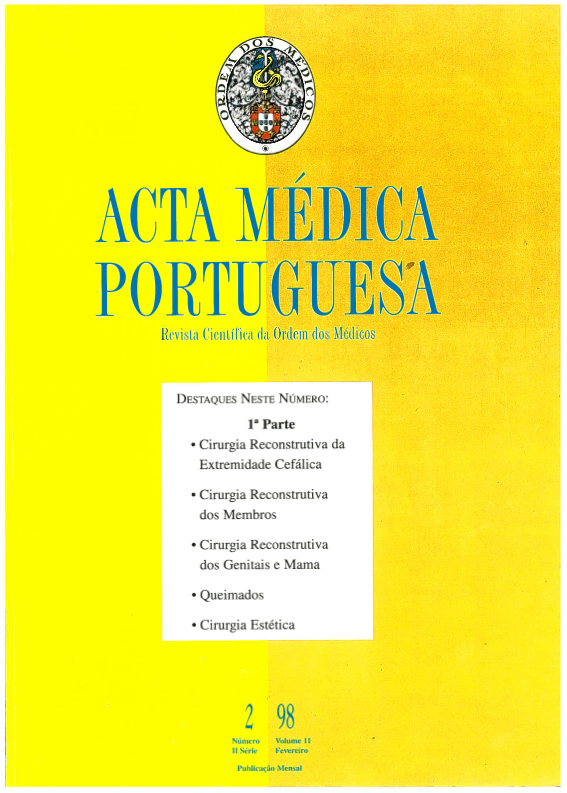Free flaps in the reconstruction of head and neck. Clinical experience.
DOI:
https://doi.org/10.20344/amp.2220Abstract
The reconstruction of head and neck defects, due to trauma, tumor resection or other, begins with a careful assessment of the patient and the respective defect. Ideally, it ends with the successful reconstructive procedure that optimally restores form and function to the patient. Free flaps have often been used as a last resort reconstructive option in the head and neck because of the need for added technical skill, a longer operating time and a perception of poor reliability. This study reviews our experience with forty-eight patients submitted to microvascular reconstructive procedures. Twelve different kinds of free flaps have been involved as the preferred choice for free flap reconstruction of a specific defect of the head and neck. The latissimus dorsi flap was used for scalp and skull reconstruction, whereas the serratus anterior or rectus abdominis free flaps were used for the reconstruction of complex defects of the middle third of the face. The radial forearm flap and the free jejunal transfer have become the preferred choices for intraoral and pharyngo-esophageal reconstruction, respectively. Good results were obtained with both functional and social rehabilitation. There were three flap losses probably due to thrombosis of the microvascular anastomosis. There was no surgical mortality. The indications for each free flap are discussed.Downloads
Downloads
How to Cite
Issue
Section
License
All the articles published in the AMP are open access and comply with the requirements of funding agencies or academic institutions. The AMP is governed by the terms of the Creative Commons ‘Attribution – Non-Commercial Use - (CC-BY-NC)’ license, regarding the use by third parties.
It is the author’s responsibility to obtain approval for the reproduction of figures, tables, etc. from other publications.
Upon acceptance of an article for publication, the authors will be asked to complete the ICMJE “Copyright Liability and Copyright Sharing Statement “(http://www.actamedicaportuguesa.com/info/AMP-NormasPublicacao.pdf) and the “Declaration of Potential Conflicts of Interest” (http:// www.icmje.org/conflicts-of-interest). An e-mail will be sent to the corresponding author to acknowledge receipt of the manuscript.
After publication, the authors are authorised to make their articles available in repositories of their institutions of origin, as long as they always mention where they were published and according to the Creative Commons license.









